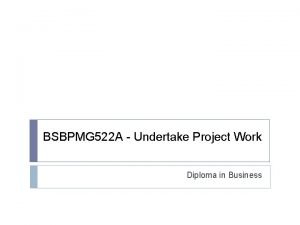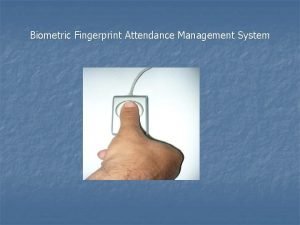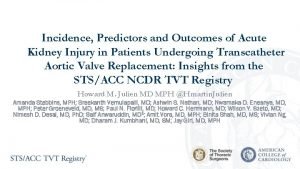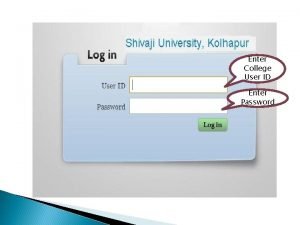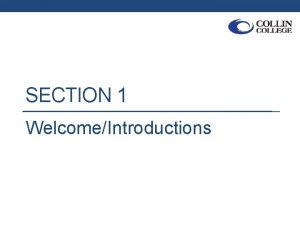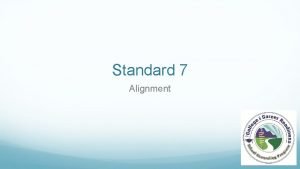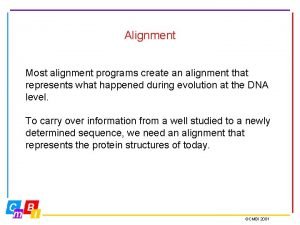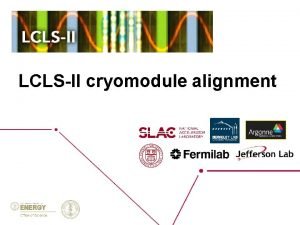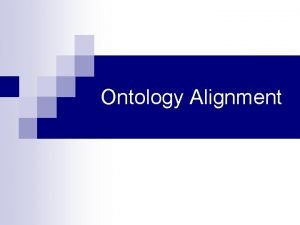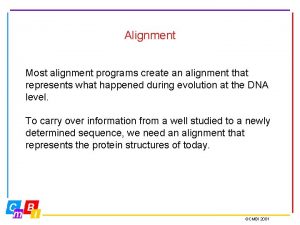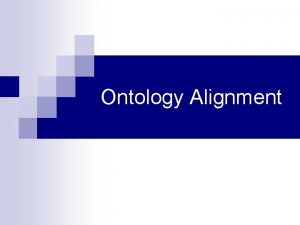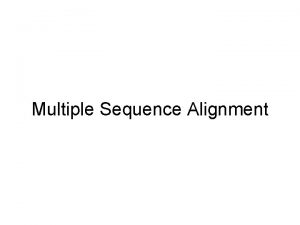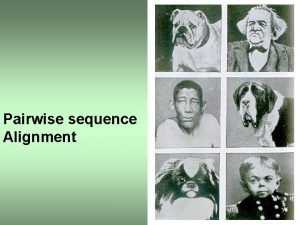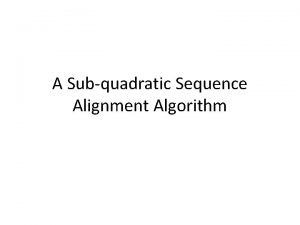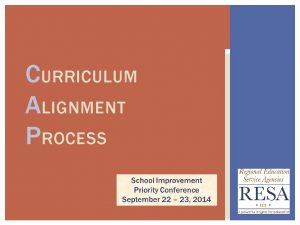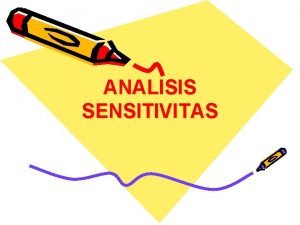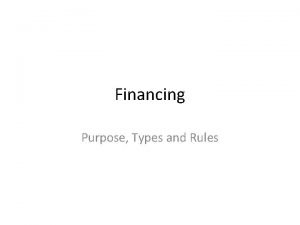Code Alignment Project College Date Code Alignment Purpose
![Code Alignment Project [College] [Date] Code Alignment Project [College] [Date]](https://slidetodoc.com/presentation_image/0b3864e56f590bc6d2067a6d07aa82e8/image-1.jpg)






























- Slides: 31
![Code Alignment Project College Date Code Alignment Project [College] [Date]](https://slidetodoc.com/presentation_image/0b3864e56f590bc6d2067a6d07aa82e8/image-1.jpg)
Code Alignment Project [College] [Date]

Code Alignment Purpose • The Code Alignment Project is a faculty-led process for examining the reporting codes (TOP, CIP, SOC, and SAM) that have been assigned to CTE courses and program awards, to ensure that they appropriately match the content of the curriculum. • The project is lead by the Academic Senate for California Community Colleges, working with the Chancellor’s Office, the Centers of Excellence, and West. Ed.

Code Alignment Benefits • More money for your college: codes impact both Perkins and Strong Workforce Program allocations. • More aid for your students: erroneous codes can jeopardize federal financial aid and veterans benefits, because it may appear that your students are enrolled in programs that don't exist. • Information to support cross-college alignment efforts: you'll have clear documentation on target occupations and more specific information on the skills included in the program, which can support articulation.

Code Alignment Benefits • More accurate information for accountability reporting: codes are used in tools like Data Mart, the Scorecard, the CTE Outcomes Survey, and the Launch. Board, which can help with accreditation and program review. • Better information on labor market conditions: codes impact the tools that provide supply and demand data, which you need for program approval and Strong Workforce Funding. • More accurate career and educational planning information: studentfacing tools like Salary Surfer, Here to Career, and Career Coach rely on these codes.

Code Alignment Benefits • Better statewide data: information will be used to inform updates to critical crosswalks, lists of codes, and resources to support code selection in the future. • Less work for your college: much of the documentation will be compiled for you. • Access to experts: curriculum, data, and labor market experts will be available to help your faculty sort through the options.

The Process: 1) Document Codes • After a kick off call that explains the process, your college documents the codes assigned to courses and awards in several CTE program areas (1 -3 weeks). • Faculty review draft lists of the courses associated with specific degrees and certificates, and the jobs they lead to (1 hour). • West. Ed and Centers of Excellence compile a Code Binder that lists all of the possible codes and their descriptors, integrating your college’s codes, codes used by other colleges, and code crosswalks. They also document cross-over of courses and jobs across similar awards.

The Process: 2) Code Alignment Workshop • A webinar before the meeting gets everyone on the same page (1 hour). • At the face-to-face meeting, faculty review Code Binders that list possible codes and their descriptors, and determine which codes best describe your programs (1 day). • The meeting will be facilitated by a team including an ASCCC-appointed curriculum expert, a Centers of Excellence labor market information expert, and a CTE Data Unlocked expert. • Discipline faculty will come to a 1 -2 hour segment focused on programs in their area, rather than the whole day. • Curriculum committee members should attend the entire day.

The Process: 3) Final Review • Your college will review proposed changes, determine which changes to make, and move forward with those changes through your local and state processes. • Your college will share what you decided with the CTE Data Unlocked team to help validate the code crosswalks. • Your college can continue the process with additional program areas.

Gathering information on codes This task is normally done by the college researcher with support from the CTE Data Unlocked Expert. The college can use CTE Data Unlocked funds to pay a faculty member or consultant to fill it out.

Examining Codes at the Face-to-Face What code have we assigned to our certificate or degree (TOP)? What jobs are we training students for? (SOC) What does our program cover? (CIP) What codes have we assigned to our courses (TOP 6)? What codes have we assigned to indicate the order of our courses (SAM)? How do these programs fit together and how would that affect code choices (crossprogram map)?

Select the right jobs The faculty determined that its curriculum was only focused on the first of the three possible occupations. The other jobs are the focus of other accounting certificates.

Select the federal program code The faculty determined the accounting program is inadvertently being reported as a retail management program to federal agencies.

Select the California program code The faculty affirmed that the correct state code is being used for its accounting certificate.

Select the California course codes The faculty found that while the course codes regarding content were correct, the sequence of courses was incorrect.

TOP Codes: What They Are • Taxonomy of Programs (TOP) codes are used for every course, degree, and certificate to help identify the program of study. • TOP codes are specific to the California Community College system. • TOP codes are used as a proxy for programs, which impacts the Student Success Scorecard, Data Mart, Salary Surfer, Launch. Board, and any effort to compare outcomes across the state. Example: 12 Health 1230 Nursing 1230. 30 Certified Nursing Assistant

If your codes are wrong, your program won’t show in tools like the Launch. Board

Process: Selecting TOP Codes • Select only 1 TOP per award. • Some TOP codes and/or definitions could be out of date; find the best fit within the existing structure. • Through the Code Alignment Project, we will document common programs for which there is no TOP code.

SAM Codes: What They Are • Student Accountability Model (SAM) codes help identify pathways within CTE programs, such as which courses are introductory and which are the capstone courses. • For example, in an EMT program, “Gateway to Health Careers” might be given an introductory code (SAM D) and “Selected Topics in Emergency Medical Care” might be given a capstone code (SAM B). • SAM codes are used to determine Perkins and Strong Workforce Program funding and in the calculations for the Student Success Scorecard, CTE Outcomes Survey, and Launch. Board. • • • SAM A: Apprenticeship (offered to apprentices only) SAM B: Advanced Occupational (not limited to apprentices) SAM C: Clearly Occupational (but not advanced) SAM D: Possibly Occupational (introductory course) SAM E: Not Occupational

SAM codes affect calculations about students who took non-intro courses and skills-builders

Process: Validating SAM Codes • Arrange courses in their logical sequence. • Pay attention to which courses are marked as introductory versus further in the sequence, particularly if many students take intro courses without intending to major in the program.

CIP Codes: What They Are • Classification of Instructional Program (CIP) codes are the federal standard for postsecondary instructional program classification. • All other postsecondary institutions in the U. S. use CIP codes for coding of instructional programs. • These codes are used for financial aid, veterans programs, gainful employment reporting, and accreditation. Example: 50 Visual and Performing Arts 50. 0402 Design and Applied Arts Commercial and Advertising Art

CIP codes affect information that is posted on your website

CIP Codes vs. TOP Codes • CIP is often more specific than TOP: 47 two-digit series (thousands of codes). • CIP has strict organizational structure: programs are coded using 6 -digit codes (always!) • Not all CIP codes are applicable for community colleges: some describe instruction for 4 -year and above.

Process: Selecting CIP Codes • Select only 1 CIP per award. • Look for the best fit based on CIP description and what is taught in your program. • Chose how many digits in the CIP code, based on how broad or specific the program is. • Remember that CIP sometimes provides an opportunity for a more specific code.

SOC Codes: What They Are • Standard Occupational Classification (SOC) is used to classify workers into occupational categories. • Used when calculating supply and demand developing labor market projections for job openings. Example: 15 -0000 Computer and Mathematical Occupations 15 -1100 Computer Occupations 15 -1120 Computer and Information Analysts 15 -1121 Computer Systems Analysts

SOC codes are used in demand supply calculations

Process: Selecting SOC Codes • Select no more than 3 -5 occupations per award. • Select 6 -digit SOC codes; stay away from 8 -digit codes (there is no labor market data for them). • Each occupation is assigned a “typical” entry-level education and “typical” on-the-job training. Ask: Will my students be qualified for employment in this occupation right after they complete my program?

How Are Codes Assigned to My Program? • TOP: part of the local curriculum process. [insert college-specific details] • SAM: part of the local curriculum process. [insert college-specific details] • SOC: part of program approval. [insert college-specific details] • CIP: selected by various college staff for accreditation, gainful employment reporting, financial aid, and veterans programs, sometimes using a crosswalk posted by the Chancellor’s Office.

How Do Codes Get Changed? • TOP - Awards: codes must be submitted to the Chancellor’s Office for a review before they can be changed in the Curriculum Inventory. • TOP - Courses: codes can be changed in the new Curriculum Inventory, without review by the Chancellor’s Office. • SAM: codes can be changed in your college’s local data system, without review by the Chancellor’s Office.

Things to Know Before Changing Codes If you decide to change the codes, first ensure you understand how the changes will affect colleges processes including: • Federal reports: Gainful employment, accreditation, and IPEDS • Funding: Strong Workforce Program and Perkins • Students: Financial aid and veterans programs • College planning: facilities and program review

Find Out More Code Alignment Project resources including: • Information on codes and where they come from • What to know before changing a code • Sample code binders http: //doingwhatmatters. cccco. edu/Launch. Board/Code. Alignment. aspx
 Global alignment example
Global alignment example Difference between local and global alignment
Difference between local and global alignment Sequence alignment
Sequence alignment Actcg
Actcg Global vs local alignment
Global vs local alignment Ex dividend record date
Ex dividend record date Eligibility for dividend
Eligibility for dividend Code commit code build code deploy
Code commit code build code deploy A battery date code sticker indicates d6
A battery date code sticker indicates d6 Expiration date julian code
Expiration date julian code Purpose purpose
Purpose purpose Chapter 5 selecting a topic and a purpose
Chapter 5 selecting a topic and a purpose Asd college college readiness program
Asd college college readiness program Early college high school at midland college
Early college high school at midland college Purpose of project proposal
Purpose of project proposal How to write background of the project
How to write background of the project National community college benchmark project
National community college benchmark project Attendance management system project report
Attendance management system project report Acknowledgement for college project
Acknowledgement for college project Map rizal's second sojourn
Map rizal's second sojourn Jones college prep mascot
Jones college prep mascot College passphrase*
College passphrase* Collin college help desk
Collin college help desk Subject code college
Subject code college Subject code
Subject code Subject code college
Subject code college The role of project management in achieving project success
The role of project management in achieving project success How to write a project background
How to write a project background Modern project profiles in spm
Modern project profiles in spm Reasons for reducing project duration
Reasons for reducing project duration Introduction to project management kathy schwalbe
Introduction to project management kathy schwalbe Software project evaluation
Software project evaluation














